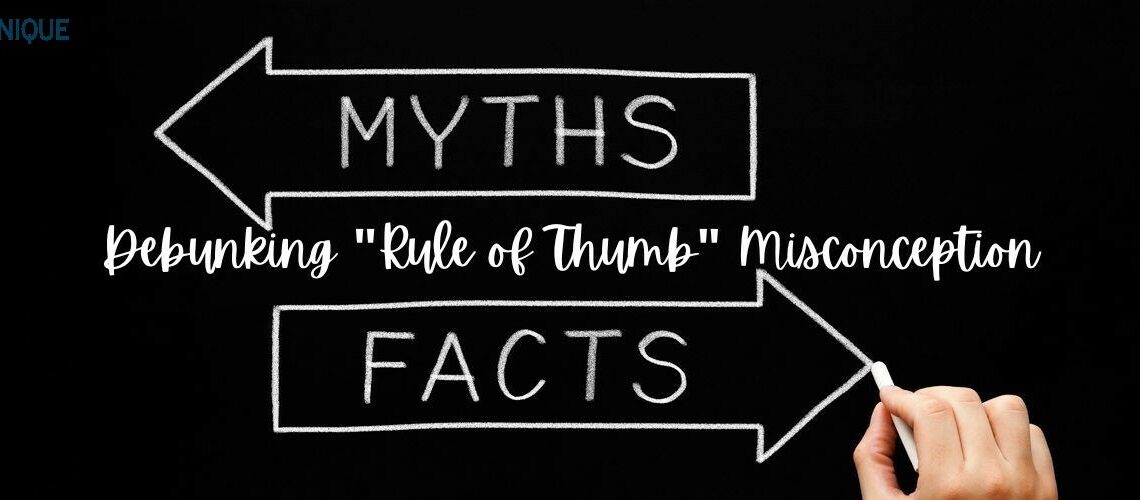The Misconception Behind “Rule of Thumb”

Have you ever heard the phrase “rule of thumb” and wondered about its origin? Contrary to popular belief, this widely used expression does not stem from an archaic English law allowing men to beat their wives with sticks no thicker than their thumbs. Let’s delve into the true origins of the phrase and unravel the fascinating story behind this common misconception.
The Real Meaning of “Rule of Thumb”: The phrase “rule of thumb” actually originated from various crafts and trades, where workers would use the length of their thumbs as a practical measuring tool. It served as a convenient and easily accessible means of estimation before standardized measuring devices became commonplace. This informal technique allowed artisans to make quick and rough measurements, highlighting the ingenuity and resourcefulness of skilled craftsmen in earlier times.
Historical Evolution of the Phrase: While the “rule of thumb” may have its roots in practical craftsmanship, the misconception about its origin can be traced back to a misinterpretation of historical context. The inaccurate association with spousal abuse emerged as a popular but unsubstantiated theory, perpetuated by misunderstandings and misinterpretations over time. This misleading interpretation has led to a widespread myth that has overshadowed the original and innocuous meaning of the phrase.
Modern Perceptions and Correcting Misconceptions: In contemporary discourse, the phrase “rule of thumb” is often used to signify a general principle or practical guideline, emphasizing a pragmatic approach to decision-making or problem-solving. While the historical context of the phrase may have been misconstrued, understanding its true origins is essential in dispelling the persistent myth associated with it. By acknowledging the genuine historical usage of the term, we can appreciate the resourcefulness and creativity of our predecessors in developing practical solutions and techniques.
Cultural Awareness and Language Usage: The case of the “rule of thumb” serves as a reminder of the importance of accurate historical understanding and the critical role of context in interpreting language and expressions. By promoting cultural awareness and linguistic precision, we can ensure that historical misconceptions do not perpetuate false narratives or reinforce harmful stereotypes. Through informed discourse and a nuanced understanding of language, we can foster a more inclusive and accurate representation of historical contexts and the evolution of language over time.
Conclusion: The phrase “rule of thumb,” often misconstrued as having a derogatory origin, actually has its roots in practical craftsmanship and trade. While the historical misinterpretation of the phrase has perpetuated a harmful misconception, it is crucial to recognize the genuine context from which it emerged. By appreciating the ingenuity and resourcefulness of artisans in using their thumbs as a measuring tool, we can understand the true essence of the “rule of thumb” and ensure that its historical significance is not overshadowed by an inaccurate and misleading interpretation.
Picture Courtesy: google/images are subject to copyright








